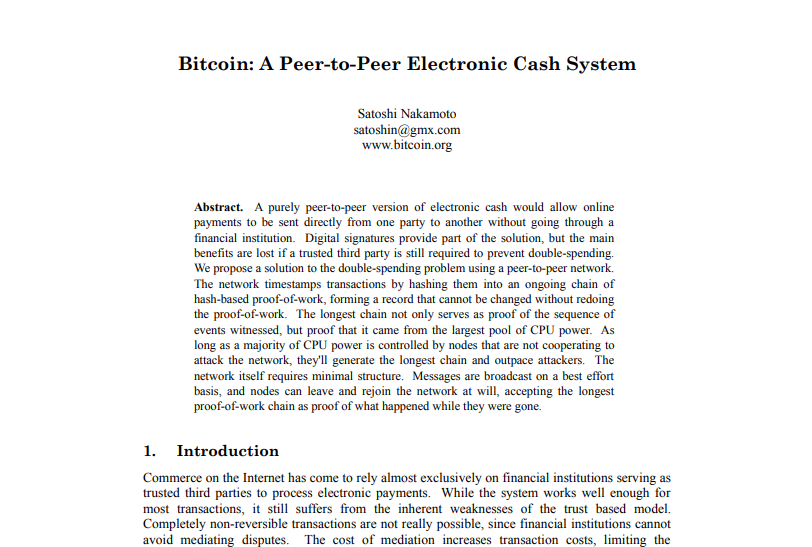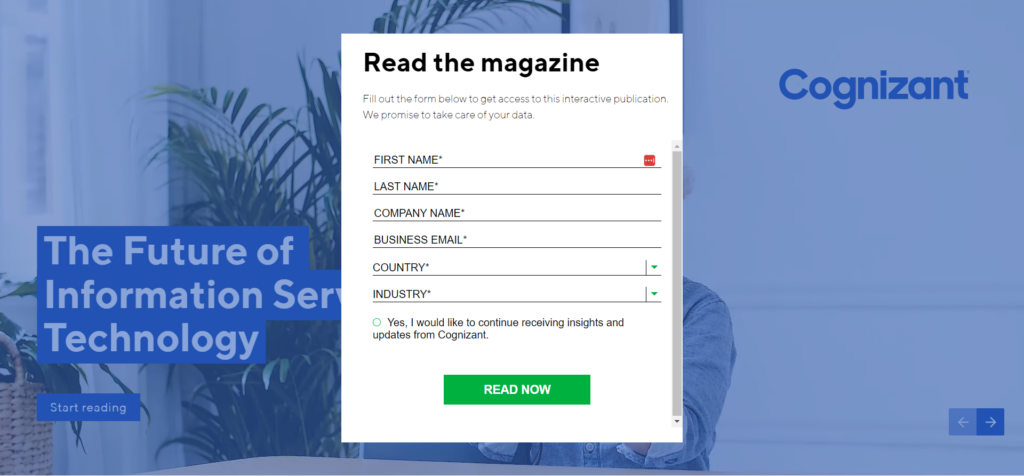White papers have become a staple for businesses looking to provide expertise and authority on various topics. But crafting an impactful white paper can be daunting, especially if you’re new to the process or need to figure out how artificial intelligence (AI) can assist your efforts. Fear not! In this comprehensive guide, we’ll dive into everything you need to know about writing white papers that command attention—from understanding their purpose and benefits to how to write a white paper and utilize AI for polishing your masterpiece.
What is a White Paper?

A white paper is a comprehensive document that provides detailed information on a specific issue, topic, or problem, along with well-researched solutions targeted toward industry professionals or decision-makers. Typically presented as an authoritative report or guide, whitepapers are designed to educate readers and enable informed decisions based on evidence, facts, and internal and external research data.
What is the purpose of White Papers?
White papers serve several purposes:
- Informative: They provide valuable insights by breaking complex subjects into digestible formats and informing readers about emerging trends or industry standards.
- Educational: Each piece seeks to educate readers on relevant industry issues while positioning the authoring organization as an expert.
- Persuasive: These documents highlight potential solutions backed by evidence-based arguments to persuade decision-makers toward a particular course of action.
Ultimately, creating a white paper aims to establish credibility within your target market through informative and engaging content curated after thorough research.
Use cases for White Papers

Whitepapers have a wide range of applications across various industries, as they’re an effective means of presenting valuable information to a targeted audience. Here, we’ll discuss some everyday use cases where whitepapers can play a vital role in communicating and demonstrating a company’s expertise.
Educational Purposes
One primary objective of whitepapers is to educate readers about complex concepts or problems. By providing detailed explanations backed by original research, industry professionals can educate clients, stakeholders, or employees about new technologies, processes, or market trends that may impact their businesses.
Lead Generation
Many companies use whitepapers as part of their content marketing strategy to generate leads. Organizations can capture potential customers’ details and nurture them through the sales funnel by offering free access (or gating) to informative resources in exchange for contact information.
Establishing Authority
Whitepapers are excellent tools to establish thought leadership and display domain expertise in any field. Professionally written whitepapers can help authors or companies differentiate themselves from competitors by highlighting their unique insights or innovative solutions to pressing issues.
Influencing Decision Makers
Decision-makers often rely on well-researched whitepapers to make more informed choices about products, services, strategies, or policies. Whitepapers assist these individuals in analyzing data-driven arguments and understanding varying viewpoints before committing resources toward a particular solution or course of action.
Product Launches
Creating an informative whitepaper can benefit internal and external audiences when launching a new product or service. Internally it helps teams understand the value proposition and align with the company’s objectives; externally, it demonstrates how the product solves customer pain points while providing relevant evidence supporting its claims.
White papers are versatile instruments used in diverse contexts such as education, lead generation efforts, establishing authority within an industry niche, shaping decisions made by key players, and promoting new products or services effectively. Harnessing this medium appeals directly to your target audience will prove invaluable in achieving your desired outcomes.
White Paper Formats
White papers tend to come in various forms, each serving a specific purpose and catering to different industries or topics. Understanding the types of white papers will help you select the most suitable white paper format for your particular needs. In this section, I’ll discuss four common types of white papers:
- Technical White Papers: These are primarily aimed at engineers, product managers, and other technical professionals who require in-depth information on a specific technology, method, or process. Technical white papers often detail advanced concepts, specifications, design principles, methodologies used for problem-solving, case studies showcasing successful implementations, and potential challenges.
- Educational White Papers: Often targeting informed decision-makers within an organization or industry experts, educational white papers take on an instructive role to provide detailed explanations of complex issues or trends. The goal is to inform readers by breaking down intricate concepts into digestible points and offering actionable recommendations based on original research findings.
- Problem-and-Solution White Papers: This type of white paper presents a common issue the target audience faces and offers potential solutions supported by evidence-backed data. The primary objective is to raise awareness about industry-wide problems while addressing how various stakeholders can proactively address these challenges using innovative methods or technologies.
- Comparative White Papers: As the name suggests, comparative white papers offer unbiased comparisons between multiple products, services, or technologies to help potential clients decide which solution fits their requirements best. They should objectively describe the advantages and disadvantages of all options being compared while providing documentation supporting each claim.
White Paper Examples

It’s essential to provide real-life examples to guide and inspire your process. In this section, I will introduce three exemplary white papers from diverse industries highly regarded for their clarity, organization, and depth of knowledge.
White Paper Example 1: Blockchain Technology

One well-known example of an informative and engaging white paper is the Bitcoin Whitepaper by Satoshi Nakamoto. This revolutionary document introduced Bitcoin as a decentralized digital currency, explaining the blockchain technology behind it and its potential benefits compared to traditional financial institutions and systems. The white paper serves as both an educational resource for those unfamiliar with cryptocurrency concepts and a detailed technical analysis for experts in the field.
As you read through the Bitcoin Whitepaper, observe how it balances technical language with clear explanations. Doing so appeals to readers at varying levels of expertise while maintaining credibility.
White Paper Example 2: The Future of Information Service Technology

Cognizant, a well-respected provider of technology services and consulting in the United States, came up with the gated white paper. It explains the future of the IT industry using high-quality graphics.
White Paper Example 3: Google Cloud’s AI Adoption Framework

This illustrative business white paper from Google seeks to convince the audience to adopt AI by capitalizing on Google’s credibility. Additionally, it offers a comprehensive technical analysis for more experienced readers.
This informational document serves as an excellent example of a company utilizing white papers to showcase its proficiency and solidify its position as a leading authority within the industry.
How can AI help with Writing White Papers?

Artificial Intelligence (AI) has emerged as a game-changing technology in many aspects of our lives, including content creation. Regarding writing whitepapers, AI can bring significant benefits and efficiencies to streamline the business writing process. This section will discuss the various ways AI aids in writing high-quality whitepapers.
Enhancing Research
Researching is integral to creating authoritative and informative whitepapers as it provides valuable insights and data that support your arguments. AI-powered tools have advanced capabilities in searching for relevant sources, scanning massive amounts of information, and analyzing trends and patterns, which helps you augment your research efforts efficiently.
Generating Ideas
One prominent challenge writers face during the initial stages is developing creative ideas or topics for their whitepapers. With AI-based tools such as natural language understanding algorithms, you can generate topic suggestions by simply inputting keywords related to your industry or area of expertise.
Content Optimization
Creating engaging and well-structured content that resonates with your target audience is vital for any successful whitepaper. AI-driven applications can analyze countless existing whitepapers across various industries to identify best practices regarding style recommendations, appropriate headings, keyword optimization, ideal paragraph length, etc., allowing you to create persuasive content easily.
Grammar and Readability Improvement
Using AI-powered grammar checkers like Grammarly or Hemingway Editor can be highly beneficial to ensure your message is clear and easy to understand for readers of different educational backgrounds. These tools correct common grammatical errors and suggest readability enhancements in terms of more superficial sentence structures or clarity enhancements.
Personalization
Effective delivery of personalized experiences has become increasingly crucial in today’s digital landscape. By leveraging machine learning algorithms’ power, you can tailor your whitepaper’s content to suit specific audience segments based on their preferences, characteristics, or behaviors, making sure readers find it relatable and engaging.
Analyzing Performance Metrics
Lastly, AI can delve deep into the performance data of your whitepapers to provide valuable insights into what content resonates with your audience. By implementing natural language processing and sentiment analysis technologies, you get detailed feedback to fine-tune your future projects accordingly.
Integrating AI into the whitepaper writing process saves time. It ensures high-quality content that is well-researched, formatted, optimized, readable, and targeted towards specific audiences catering to their preferences. This powerful technology enables you to leverage numerous benefits to elevate the success of your whitepapers and gain a competitive edge in today’s fast-paced business environment.
How to Select a Topic for Your White Paper

Selecting the right topic is crucial for the success of your white paper. A well-chosen subject will not only showcase your expertise, but it will also resonate with your target audience, driving interest and engagement. When writing a white paper, consider these three key factors: audience, expertise, and a problem-based and solution-focused approach.
Audience
Understanding your target audience is essential when selecting a white paper topic. To create a compelling piece of valuable content, consider the following questions about your readers:
- Who are they? (e.g., industry professionals, potential customers)
- What issues or challenges do they face regularly?
- What level of knowledge do they possess on the subject matter?
Researching and gathering insights into your target audience will enable you to craft content that speaks directly to their needs and interests.
Expertise
Your whitepaper should demonstrate your experience and proficiency in a particular topic or domain. To establish yourself as an authority on chosen subject matter, focus on areas where you have exceptional prowess or unique insights.
When determining which area within your field to explore in-depth, contemplate these questions:
- In which subjects am I most knowledgeable?
- Can I provide fresh perspectives or innovative solutions within this sphere?
- Are there emerging trends or pressing issues that need to be addressed?
Focusing on topics that align with your skillset—and those currently underserved—will allow you to stand out while providing valuable information.
Problem-Based and Solution-Focused
Addressing common problems within your industry or niche can significantly drive interest in your white paper by answering burning questions shared by many stakeholders.
Employ these steps when identifying relevant topics:
- Identify critical challenges faced by businesses or consumers within your target market.
- Determine existing strategies for overcoming said obstacles.
- Offer novel approaches—or improve upon existing ones—by providing feasible solutions.
Solving pressing problems within your industry can cultivate trust and enhance your brand reputation. Furthermore, by concentrating on problem-solving aspects in your white paper, the content will resonate with its intended readership—contributing to higher retention rates and reader engagement.
White Paper Preparation
A well-prepared white paper is the foundation of a successful marketing campaign. Preparation involves thorough research, reading other white papers in your industry, and organizing your ideas using a mind map. Let’s delve into each step to create an outstanding white paper.
Research
It’s crucial to conduct comprehensive research on the topic you’re addressing. Some best practices for research include:
- Using reputable sources: Reliable sources like government websites, academic journals, and industry reports will enhance the credibility of your white paper.
- Identifying trends and patterns: Analyzing data and spotting trends can help you determine the relevance of your topic and pinpoint areas that need exploration.
- Verifying facts: Cross-checking various sources to ensure that all information in the white paper is accurate.
- Citing sources: Always provide complete references for any data or statistics used within the body of your text.
Remember to address both sides of an argument when discussing solutions or alternatives—presenting balanced information builds trust with your readers.
Read Other White Papers
Before diving into writing your white paper, take time to read others in your field. Doing so will offer valuable insights into industry-specific topics, formats, styles, and tones.
When evaluating existing materials:
- Note what works well and what can be improved upon
- Observe differences in format from one document to another
- Assess their visual elements (charts, graphics) for efficiency
- Examine how niche terminology is utilized within texts
Discovering trends shared across multiple white papers can guide you toward creating a document optimized for meeting audience expectations while differentiating yours from competitors’ publications.
Use a Mind Map
Organizing ideas efficiently before starting on actual writing saves time and ensures coherence throughout the content creation process. One way to achieve this structure involves creating a mind map—a graphical representation outlining the flow and hierarchy of your thoughts.
Here’s how to create a mind map:
- Place the central topic at the center of your page
- Draw branches for related sub-topics, connecting them directly or indirectly to the core theme.
- Add supporting information (examples, data, case studies) branching off each sub-topic.
- Assign unique icons or colors to visually distinguish groups of ideas from one another (optional)
A well-developed mind map will guide you through drafting your white paper by identifying primary points, heading the organization, and content flow to strengthen cohesion in the final product.
How to Write White Paper – Whitepaper Structure
A well-structured white paper can help your audience grasp the intended message quickly and easily. A standardized structure for your white paper will enhance its credibility, readability, and professional appearance. Here is a recommended structure with key elements you should consider:
Title Page
The title page should include the title of your white paper, author’s name(s), company logo, date, and contact information. Ensure the landing page title is informative and reflects the theme of your white paper. A captivating title can motivate readers to explore the content further.
Abstract
An abstract briefly overview your whitepaper’s purpose and content in 150 – 200 words or less. The aim is to give readers a sneak peek into what they can expect from your work and entice them to continue reading.
Problem Statement
This section identifies the problem or challenge that prompted you to write this white paper. It helps set the context for discussion by outlining current pain points experienced by potential consumers and industry professionals. Demonstrate empathy towards your readers’ concerns while adding value and preparedness for detailed coverage.
Background
In this part of the whitepaper, explain why the issue exists. Offer historical context or illustrate experiences faced by those dealing with this particular problem—thereby justifying developing solutions present in subsequent sections while offering valuable insights.
Solution
Here you propose viable solutions to address the identified problem—be it innovative technologies, improved processes, or disruptive business strategies tailored specifically for your target audience’s needs within their domain knowledge:
- Describe each solution methodically and precisely.
- Exhibit how these approaches benefit readers.
- Include any supporting data (such as case studies) that validates success factors linked to proposed alternatives.
Remember, not every solution should involve direct sales pitching; instead, focus on delivering practical ideas sought after by respective stakeholders who consume these thought leadership materials.
Conclusion
Wrap up your white paper by summarizing key points discussed while reinforcing your proposed solutions’ importance. Drive home the value proposition and how it addresses readers’ needs or pain points. Lastly, consider offering guidance on the next steps for them to unleash benefits delivered via recommended optional action plans.
References
Support your white paper’s credibility by citing relevant data sources, academic research, or industry studies that inform your proposals.
How to Write White Paper – Formatting and Style
Paying attention to formatting and style is essential when writing a white paper. This makes your document easier to read and understand and establishes you as an authority on the topic you’re discussing.
Let’s explore four key aspects of white paper formatting: length, detail, appearance, and style.
Length
The ideal length of a white paper varies depending on its purpose and target audience. Generally, a comprehensive white paper should be 6-12 pages long – or roughly 2,000 to 5,000 words. However:
- Consider extending the length if your topic is exceptionally complex or requires an in-depth explanation.
- Conversely, if your material is relatively simple or has been covered extensively elsewhere, aim for brevity without sacrificing quality.
Remember that readers value their time. Keep your content concise and provide valuable information to make them more likely to engage with your insights.
Detail
When explaining how to write a white paper, it’s crucial to balance detail with readability:
- Specificity: Provide enough information for readers to understand the context and nuances of your topic.
- Simplicity: Break down complex ideas into easily digestible terms without oversimplifying.
- Accuracy: Reference credible sources when presenting data or research findings; this boosts your credibility and persuades skeptical readers.
Strike a balance between being informative yet accessible so beginners can grasp concepts. At the same time, experts still find value in your writing.
Appearance
Your white paper’s visual design speaks volumes about its professionalism and credibility. To make the best impact:
- Use consistent color schemes and fonts throughout the document
- Include high-quality graphics such as charts, graphs, or illustrations that enhance understanding
- Divide content into easy-to-digest sections using subheadings or bullet points
- Format margins appropriately – generally 0.5 to 1 inch on each side, with ample space between paragraphs for readability
In short, the visual presentation of your white paper should be clean and professional without being cluttered or overwhelming.
Style
The writing style employed in a white paper is critical to effectively communicating complex ideas. Aim for a precise yet conversational tone that engages readers without intimidating them:
- Use active voice: This helps create clear, direct sentences that engage the reader.
- Adopt jargon-free language: Technical terms and industry acronyms might confuse non-expert readers; explain these concepts simply before using abbreviations.
- Vary sentence length: Shorter sentences are easier to read, but varied lengths help maintain interest and prevent monotony.
Throughout our guide on writing a white paper, remember that your primary goal is communicating valuable information clearly and compellingly.
By focusing on these four aspects of formatting and style, you’ll increase engagement, convey authority, and maximize the effectiveness of your white paper.
What is the Step-by-Step Process of Writing a White Paper?

Writing a good white paper often requires meticulous planning, research, and strategic execution. The process can be broken down into several key steps that will help guide you from ideation to final publication. Here are the crucial steps involved in writing an effective white paper:
- Identify your audience: Before you begin writing, it’s essential to determine your target audience and their needs. Understand their pain points and challenges so that your white paper directly addresses these concerns.
- Select a topic: Choose a relevant topic based on industry trends or pressing issues your target audience faces. Ensure the subject has enough depth to warrant a detailed white paper.
- Conduct thorough research: Delve into industry data, reports, case studies, news articles, and competitive analysis to gather valuable insights. Use reliable sources to ensure accurate information is presented.
- Establish a clear goal: Understand the purpose of your white paper – whether it’s informing readers about a new development in technology or building awareness for specific solutions offered by your business.
- Create a white paper outline: Develop a structure that flows logically through the main components of a typical white paper: introduction, problem statement, background information, the proposed solution(s), conclusion/summary, and references.
- Write the content: Break down complex ideas into concise sections using easy-to-understand language while maintaining an engaging tone throughout the document.
- Incorporate visuals: Maximize reader engagement with well-placed charts, graphs, images, or infographics that support your primary message and break up large blocks of text into digestible pieces.
- Avoid sales jargon: Keep promotional messages at bay to maintain credibility and trustworthiness. Instead, focus on providing valuable information for readers searching for helpful insights and expert opinions.
- Edit and proofread multiple times: Refine your writing by reviewing it for clarity, coherence, consistency, and grammatical accuracy. Make sure to double-check all facts and figures quoted in the content.
- Design a visually appealing layout: Remember to consider the importance of a polished look representing your brand identity while ensuring readability.
- Promote your white paper: Finally, develop an effective promotional strategy to make your audience aware of the resource you’ve created – through social media marketing, email campaigns, or working with influencers in your industry.
By following this step-by-step process on how to write a white paper, you can ensure that the result is informative, engaging, and valuable for readers while positioning yourself as an expert within the industry.
White Paper Design Tips and Writing Best Practices

When learning to write a white paper, paying attention to some crucial writing tips is essential. These tips will ensure that your white paper is informative, engaging, visually appealing, and user-friendly.
Research Your Audience and Topic Well
Invest time researching your audience and topic before writing a white paper. Understand your target audience’s demographics, preferences, pain points, and needs. Likewise, gather reliable information about your topic by studying industry trends, reports, surveys, and other reputable resources. By doing so, you can craft content that resonates with your readers.
Make Sure People Can Scan Your Content Easily
People often scan through documents instead of reading every word. To make your white paper more reader-friendly:
- Use clear headings and subheadings
- Break content into shorter paragraphs (50-100 words per paragraph)
- Utilize lists when presenting different points or ideas
These formatting techniques help guide your readers’ eyes through the document while making it easier for them to digest the information presented.
Use a White Paper Template
Using an established white paper template can streamline the creation process and provide structure for your document. A custom whitepaper format helps ensure consistency throughout all sections of the piece while saving time in designing each page from scratch.
Emphasis and Readability
Your text should be easily understood by leveraging an active voice. Use logical transitional phrases within sentences like “however” or “moreover” rather than relying solely on conjunctions such as “so,” “and,” or “but.” Improve readability further by maintaining a maximum sentence length of 15 words to minimize confusion among your audience.
Keep It Succinct and to the Point
A well-written content contains precise information with minimal fluff. Aim for directness in conveying critical details in your white paper.
Keep Mobile Visitors in Mind
Considering the ever-growing number of mobile users, making your white paper compatible across multiple devices is essential. This ensures visitors can access and read your content seamlessly despite screen size constraints.
Add Data Visualizations to Your White Papers
Visuals play an important role in bolstering the overall impact of a white paper. Using clear and compelling data visualizations such as graphs, charts, or infographics highlights key statistics, trends, and facts related to the topic while making complex concepts more digestible.
Emphasize Key Points with Tables and Text Boxes
Draw the reader’s attention to crucial information by incorporating tables or text boxes within your white paper. These formatting tools help readers quickly locate vital details without getting lost amidst paragraphs of text.
Break Up Chunks of Text with Visuals
Large blocks of text may be daunting for some readers; therefore, intersperse images throughout the document to enhance comprehension and maintain reader interest.
Allow Plenty of White Space on Pages
Ensure sufficient white space surrounds various elements like images or headings since clutter only detracts from readability.
Use Consistent Design That Reflects Your Topic
A unified design promotes a professional image for your white paper. Maintain consistency in fonts, colors, alignment patterns, heading sizes, and other styling aspects related to visuals or page layout.
Incorporate Branding Into Your Design
Finally, integrate branding elements like logos or specific color palettes into your design. This helps increase brand recognition and authority among readers.
Mistakes to Avoid when Writing White Paper

To create a compelling white paper that informs, educates, and persuades your target audience, it is essential to avoid certain pitfalls. When writing a white paper, be sure that you steer clear of these common mistakes:
Sounding Like a Sales Pitch
A vital purpose of a white paper is to provide valuable and unbiased information to your readers. Although the end goal may be to generate leads and encourage conversions for your products or services, focusing on sales language can detract from the genuinely informative nature of your content. Instead, use persuasive facts and data to make your point without being overly promotional.
Lack of Adequate Research
- A comprehensive understanding of the topic
- Relevant statistics and data sources
- Up-to-date industry trends
- Expert opinions or insights
Assembling all these elements requires thorough research. Skimping on this crucial step could lead to inaccuracies and undermine your whitepaper’s credibility and brand.
Poor Design
Poor design choices can drastically diminish effectiveness even if your content is well-researched and informative. Consider these factors when working on the appearance of your whitepaper:
- Clear structure: Organizing headers, subheaders, text blocks, charts, and tables in an easily digestible format makes it simple for readers to grasp essential points quickly.
- Readability: Choose fonts and colors wisely – avoid overly flashy or hard-to-read selections.
- Visuals: Incorporate graphs, illustrations, or images where appropriate to support your narrative.
- Branding consistency:`Ensure you maintain branding cohesion by using similar color schemes or visuals in other company materials.
An appealing design enhances readability while also projecting professionalism.
Not Telling a Story
While providing factual information should be at the core of any successful whitepaper, narrating it with storytelling techniques keeps readers engaged through empathy, relatability, or curiosity. Weaving a story around statistics or using case studies creates resonance, drawing in readers emotionally and enhancing information absorption.
Leaving It Abstract
It’s essential that your whitepaper not only addresses a particular problem but also provides concrete solutions. Offer actionable suggestions and illustrate the benefits with real-world scenarios where possible.
By dodging these mistakes when writing and designing your white paper, you’re more likely to create an informative, engaging document that stands out from competitors while effectively appealing to your target audience. This helps establish trustworthiness as an authoritative voice in your industry, ultimately generating positive results for your brand reputation and bottom line.
To Gate or Not to Gate White Papers
Deciding whether to gate your white papers is a strategic choice that can significantly impact the success of your content marketing efforts. In this section, we will explore the concept of gated content and discuss semi-gating as an alternative strategy.
What is Gated Content?
Gated content refers to any online material requiring users to provide certain information, such as contact details or email addresses, to access it. This can be anything from ebooks, whitepapers, articles, webinar recordings, videos, or any other valuable knowledge-based assets you produce for content marketing purposes.
By gating your white papers, you set up barriers in exchange for valuable user data. Businesses often leverage These contact details for lead generation and nurturing sales prospects through targeted email campaigns and personalized communications.
However, there are trade-offs when choosing to gate your contents:
Pros:
- Generate qualified leads
- A better understanding of user demographics and interests
Cons:
- Limits reach and potential views/downloads
- This may deter some users who are unwilling to share their details
As a result, gated content is ideally used when the benefits from lead generation outweigh potential restrictions in access and engagement with your materials.
Semi-Gating
A popular compromise between fully open and gated strategies is known as semi-gating. With semi-gating techniques, marketers allow partial access or lower-value resources freely accessible without any hurdles while reserving premium content behind an informational trade-off.
Here’s how you can implement semi-gating in practice:
- Preview Sections: Allow readers a preview of the white paper by sharing part of the content (like selected sections or introductory pages). This gives interested viewers enough information about what they will receive without divulging the entire document.
- Content Upgrades: Provide additional downloadable resources alongside ungated informational assets. For example, offer a free blog post containing basic information on the topic and invite readers to submit their contact details in exchange for a more in-depth, full-length white paper on the same subject.
- Combining Free and Paid Content: Give users access to an ungated version of your content with slimmed-down value while saving premium content as gated material.
Semi-gating strategies aim to balance disseminating valuable knowledge without barriers and obtaining user data necessary for lead-generation strategy. By experimenting with different semi-gating approaches, you can find an ideal middle ground that suits your business goals and provides valuable insights into consumer preferences.
White Paper promotion

The importance of promoting whitepapers
Promoting your whitepaper is just as crucial as the writing process itself. Even with the most engaging and informative content, a poorly promoted whitepaper will not get the attention it deserves. Effective promotion helps increase visibility, generate leads, and establish your brand’s credibility in your industry. Promoting your whitepaper through various channels allows you to reach a larger audience and showcase your expertise. By implementing different promotional strategies, you can boost your whitepaper’s reach and ensure it reaches its full potential.
Social promotion
Leveraging social media platforms is an effective way to share your latest whitepaper. Utilize LinkedIn, Twitter, Facebook, and other relevant platforms where your target audience actively engages:
- Post links to your new publications on these platforms.
- Share key insights or standout statistics from within the publication.
- Consider sharing visually appealing images related to the subject matter accompanied by engaging captions.
- Engage in relevant conversations with thought leaders in online groups or forums.
Additionally, don’t hesitate to use sponsored posts or paid advertisements if the budget allows. This can drastically increase exposure beyond organic reach.
Email marketing
Email remains one of the most powerful tools for driving engagement around content such as whitepapers. Make use of existing mailing lists by sending newsletters announcing new publications or featuring them in regular updates:
- Segment recipients based on their interests or profiles for better results.
- Use clear yet compelling subject lines that position the included content as beneficial for readers.
- Craft concise emails that briefly describe major takeaways while providing clear calls-to-action directing towards downloads or registration forms.
Remember to follow up with those interested in previous publications. Over time, a well-nurtured list of contacts yields more downloads and conversions.
Influencers and earned media
Reaching out to influential individuals within relevant industries can amplify the reach of your whitepaper. Partnering up with industry leaders or key opinion leaders can result in their followers considering your content to be more credible:
- Locate potential influencers and approach them professionally.
- Share samples from your whitepaper, emphasizing benefits for their audience.
- Offer incentives such as exclusive access, opportunities for co-authorship, or affiliate partnerships.
Moreover, submitting your work to reputable publications in the same field further boosts credibility, expanding exposure beyond immediate networks.
Going beyond the basics
For a truly comprehensive promotional strategy, consider going beyond typical methods. Explore options like podcast collaborations—discussing the topic on popular podcasts earns more attention—or hosting webinars featuring live discussions about key findings. Participating in expert panels at conferences also increases visibility and credibility among peers.
By employing these varied promotional tactics, you maximize your chances of captivating new audiences eager to learn from authoritative sources like well-executed whitepapers. These strategies ultimately build stronger relationships with readers, and current and prospective customers and bolster brand visibility, setting you apart within an oversaturated digital information sphere.
Common Questions About Writing a White Paper

Writing a white paper may seem like an arduous task. Still, it can become a manageable project with the proper planning and consideration of essential factors such as time, length, and software tools to assist you. This section will explore these three elements that play a crucial role in creating an effective white paper.
How many hours does it take to write a white paper?
The time required to write a white paper varies depending on research, industry knowledge, writing proficiency, and the topic’s complexity. It’s common for professional writers to spend anywhere from 30 to 50 hours researching and drafting, while revisions could add another 10-20 hours on top of that; however, some projects might be less labor-intensive due to familiarity or existing resources.
It is important to remember that attention to detail during the research process is critical for producing high-quality content. Allocating adequate time for organizing your findings will help structure the final document effectively.
How long should a whitepaper be?
Whitepapers can range from as few as five pages up to more than 25 pages, depending on the topic and target audience. A general guideline for determining an appropriate length would be:
- 6-8 pages: An introductory or simplistic topic addressing a broad audience.
- 12-16 pages: A moderately complex topic aimed at industry professionals.
- 20+ pages: A comprehensive analysis of a complex issue targeting expert readership.
These recommendations are not set in stone and may vary depending on your specific goals with each piece. However, striking the right balance between substance and brevity is essential – a well-researched shorter document often carries more weight than an excessively long one filled with filler content.
What software do you use to create whitepapers?
Choosing suitable software for crafting your whitepaper is vital for ensuring ease of use and streamlining your workflow. Although there are numerous options available, the following list provides recommendations for reliable and popular choices:
- Microsoft Word: A widely used word processor that allows sophisticated text control, editing features, formatting options, and table creation capabilities.
- Google Docs: A collaborative cloud-based document editor compatible with MS Word files, offering convenient real-time collaboration.
- Adobe InDesign: For projects requiring advanced layout design elements or handling larger volumes of content – an industry-standard choice for graphic designers.
- Canva: An intuitive online design tool ideal for creating consistently branded visual components such as infographics or cover pages to complement your whitepaper’s cohesive presentation.
- Scrivener: A robust writing application specifically designed to help authors manage large documents with its outlining, note-taking, and organizational tools.
Regardless of which software you select, utilizing AI-powered proofreading and grammar checkers like Grammarly can be valuable to improve your whitepaper’s clarity and perfect it after completion.
Whichever route you take during the planning phase of creating a white paper – from drafting to polishing – considering the time needed, optimal length, and choosing suitable software will enable an efficient process that results in a high-quality final product showcasing your expertise within the industry.


